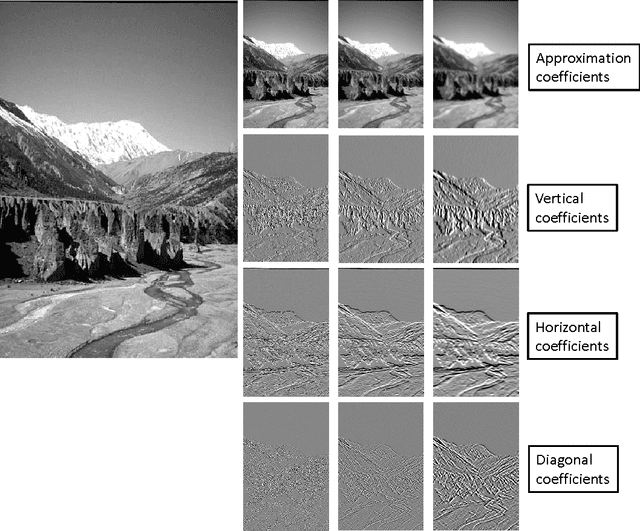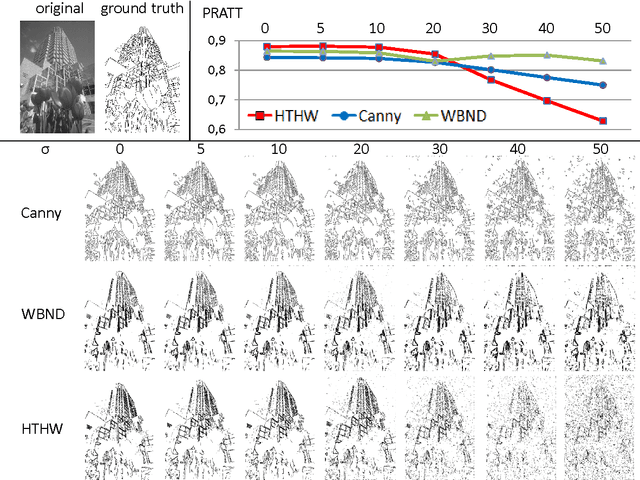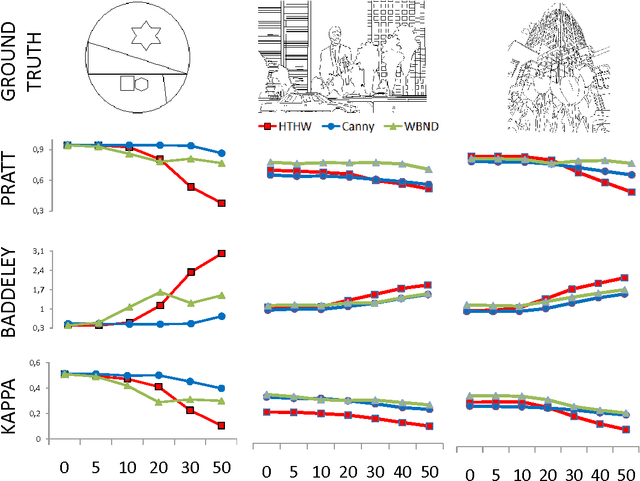Elena Rufeil Fiori
Markovian models for one dimensional structure estimation on heavily noisy imagery
Apr 29, 2013



Abstract:Radar (SAR) images often exhibit profound appearance variations due to a variety of factors including clutter noise produced by the coherent nature of the illumination. Ultrasound images and infrared images have similar cluttered appearance, that make 1 dimensional structures, as edges and object boundaries difficult to locate. Structure information is usually extracted in two steps: first, building and edge strength mask classifying pixels as edge points by hypothesis testing, and secondly estimating from that mask, pixel wide connected edges. With constant false alarm rate (CFAR) edge strength detectors for speckle clutter, the image needs to be scanned by a sliding window composed of several differently oriented splitting sub-windows. The accuracy of edge location for these ratio detectors depends strongly on the orientation of the sub-windows. In this work we propose to transform the edge strength detection problem into a binary segmentation problem in the undecimated wavelet domain, solvable using parallel 1d Hidden Markov Models. For general dependency models, exact estimation of the state map becomes computationally complex, but in our model, exact MAP is feasible. The effectiveness of our approach is demonstrated on simulated noisy real-life natural images with available ground truth, while the strength of our output edge map is measured with Pratt's, Baddeley an Kappa proficiency measures. Finally, analysis and experiments on three different types of SAR images, with different polarizations, resolutions and textures, illustrate that the proposed method can detect structure on SAR images effectively, providing a very good start point for active contour methods.
 Add to Chrome
Add to Chrome Add to Firefox
Add to Firefox Add to Edge
Add to Edge